Presenter: Sarrath Sutthipong, Napong Kitpanit
Hospital: Bhumibol Adulyadej Hospital, Bangkok, Thailand
Summary
This study reports a 79-year-old male with right graft limb thrombosis and left anastomotic pseudoaneurysm 10 years post-aortobifemoral bypass. A hybrid approach (covered stent for pseudoaneurysm + thrombectomy/stenting for thrombosis) resolved symptoms, improving ABI from 0.35 to 0.7. Twelve-month follow-up confirmed durability. Hybrid surgery reduces perioperative risks in elderly patients compared to redo open procedures.
Introduction
Late complications of aortobifemoral bypass (e.g., graft thrombosis, anastomotic pseudoaneurysm) pose significant challenges. Traditional redo open surgery carries high morbidity, especially in elderly patients. Hybrid procedures integrate endovascular and open techniques to minimize invasiveness while addressing multifocal pathologies.
Case analysis
Clinical Profile: Right limb rest pain, left groin pulsatile mass; CTA revealed right graft thrombosis with SFA occlusion and left anastomotic pseudoaneurysm (10 cm).
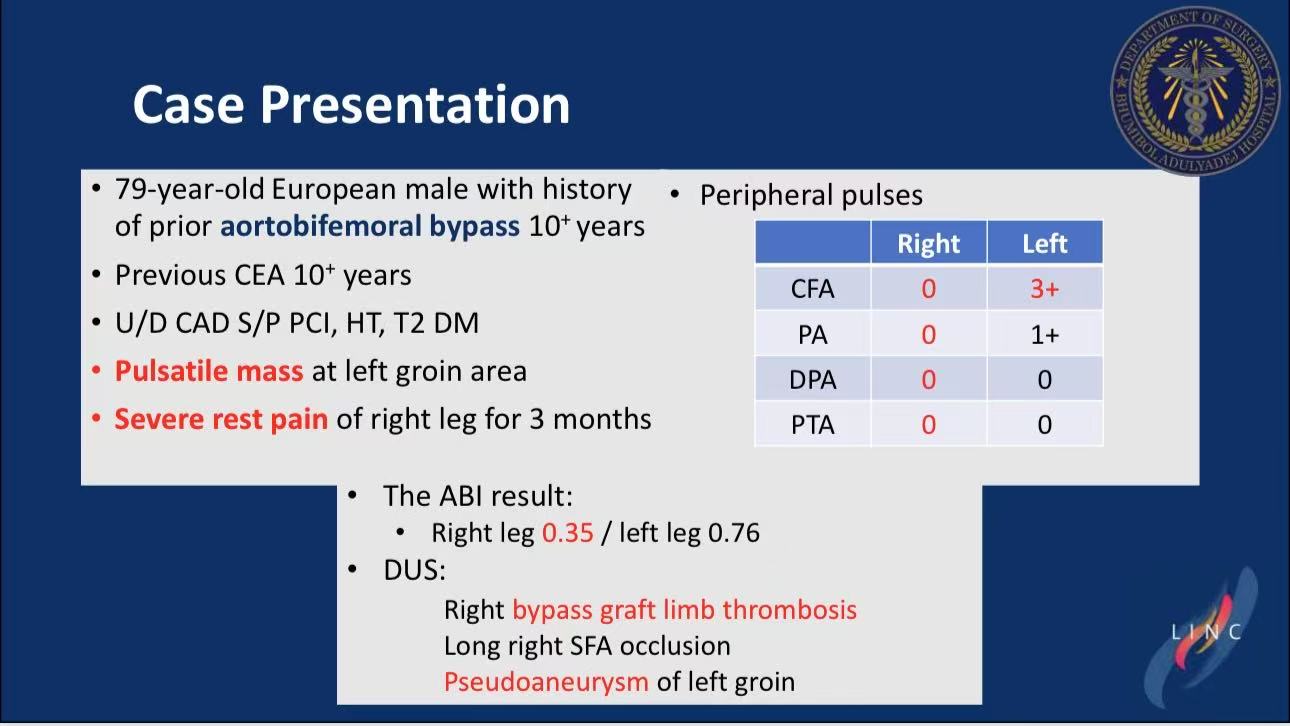

Procedure:
Left: Covered stent (Covera 9×100 mm) via mid-thigh access.
Right: Open thrombectomy + "Kissing" stents (Express LD 9×37 mm) + bare-metal stent (Absolute Pro).

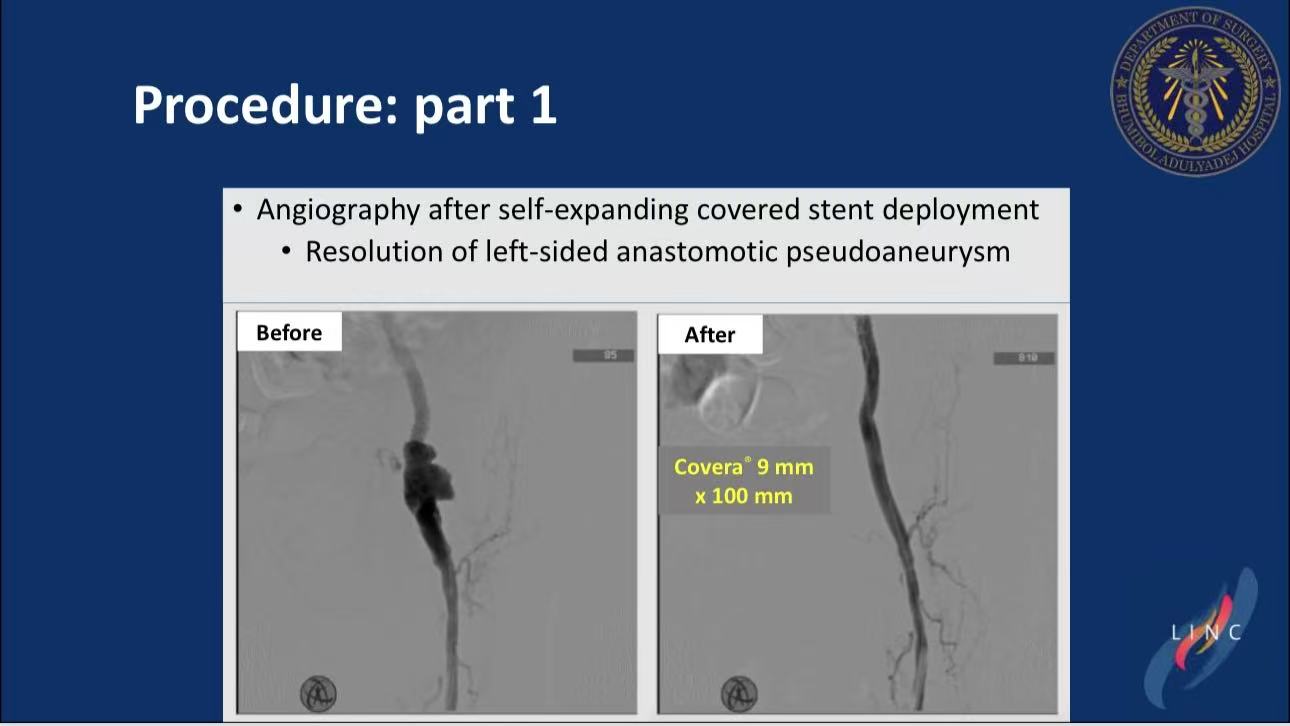
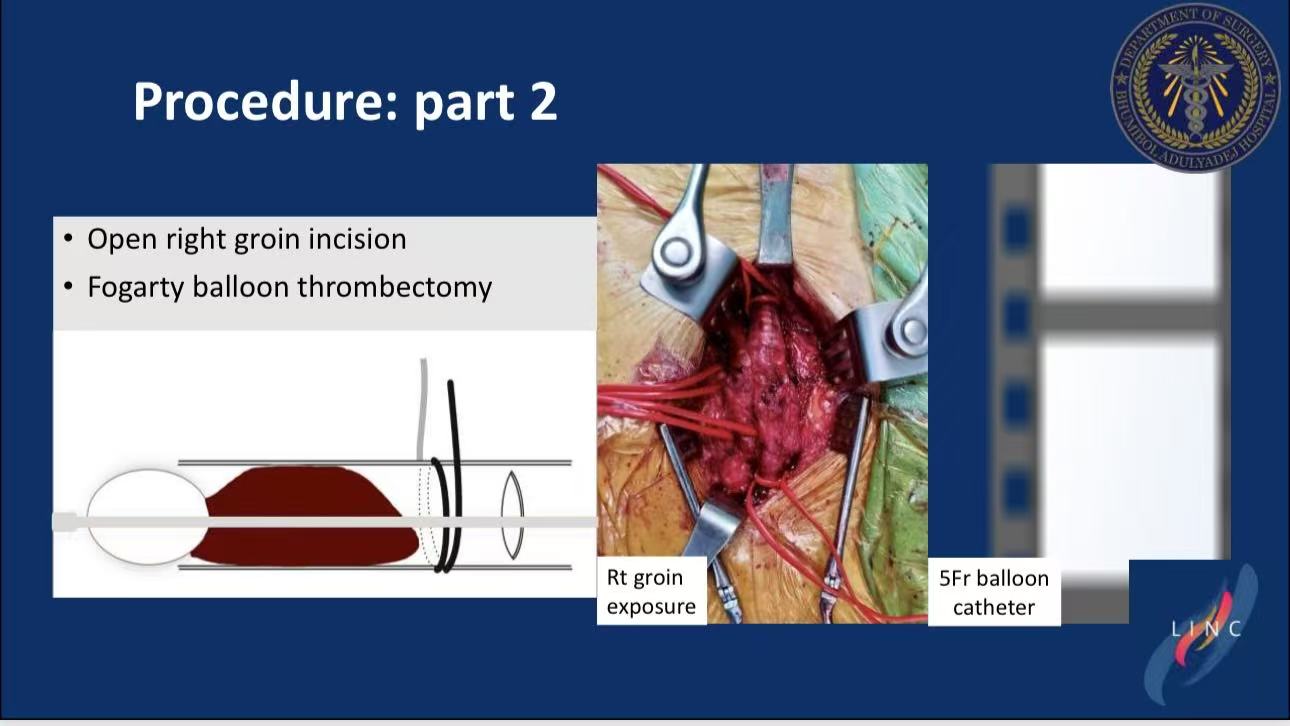
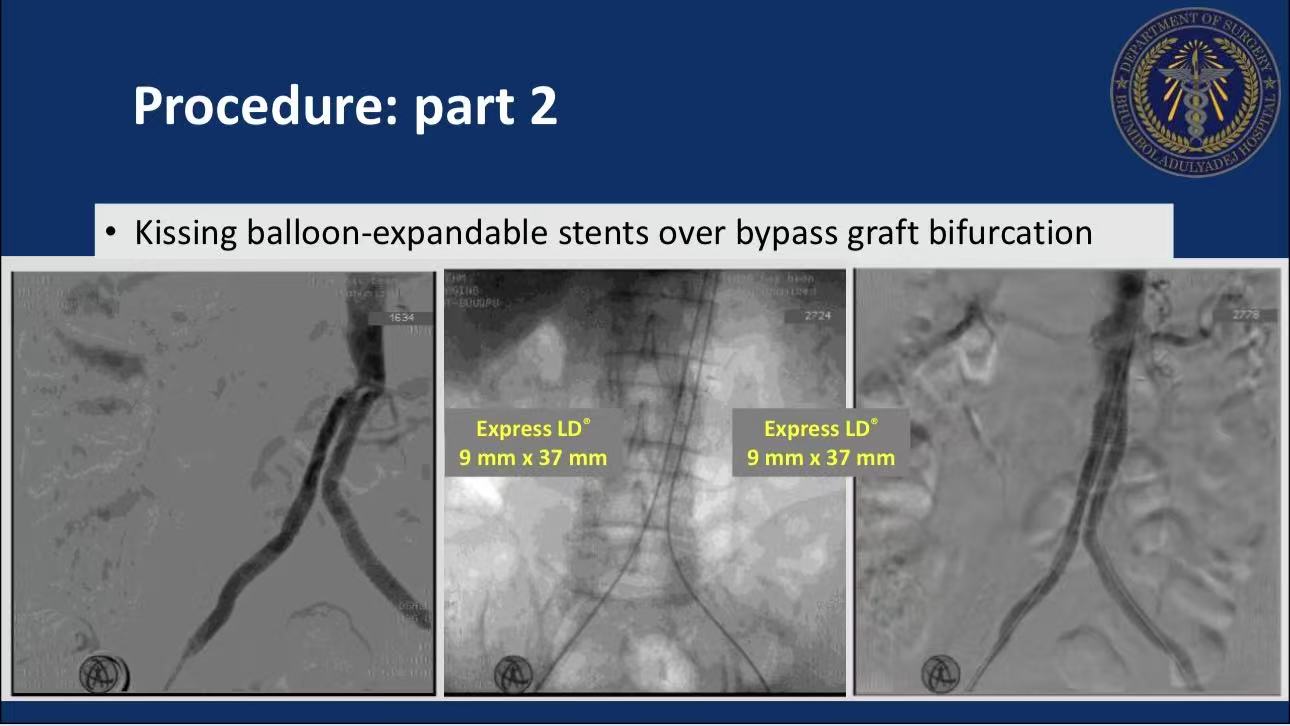

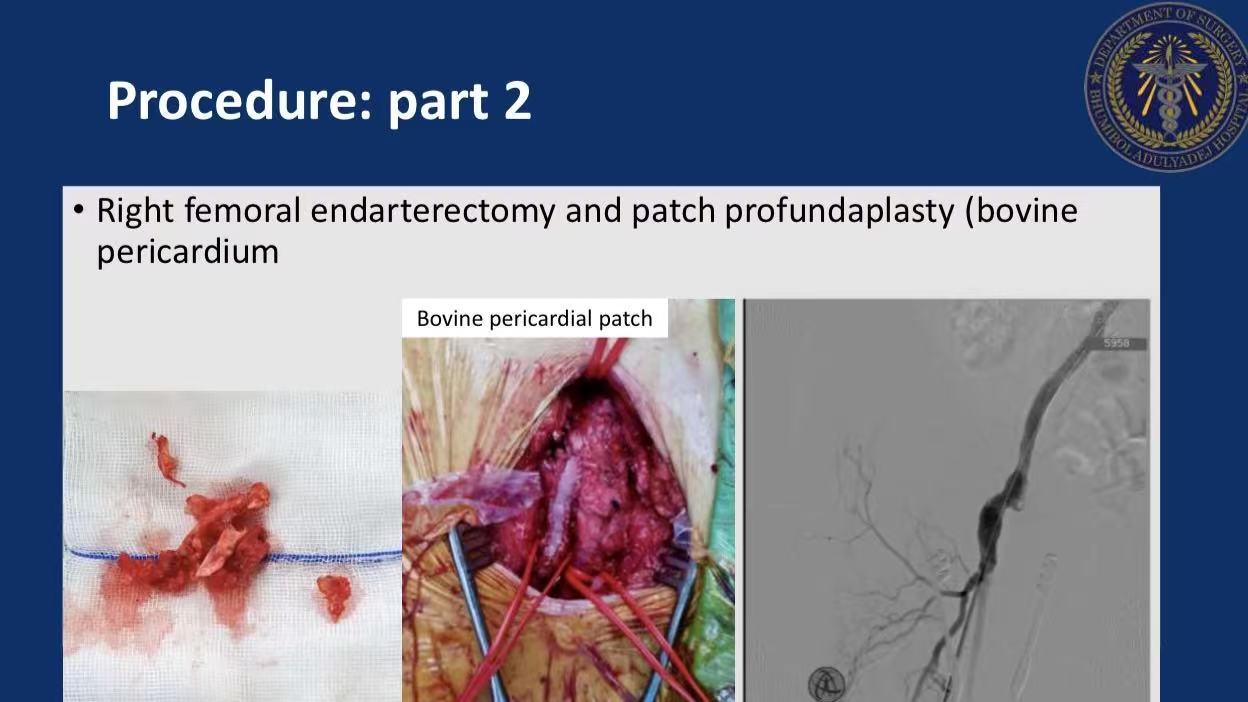


Outcome: Operative time 4 hours, LOS 3 days; ABI improved to 0.7, duplex confirmed graft patency.

Conclusion
1.Hybrid surgery is a safe alternative for managing late aortobifemoral bypass complications, particularly in elderly or high-risk patients.
2.Long-term surveillance is essential to evaluate durability.



